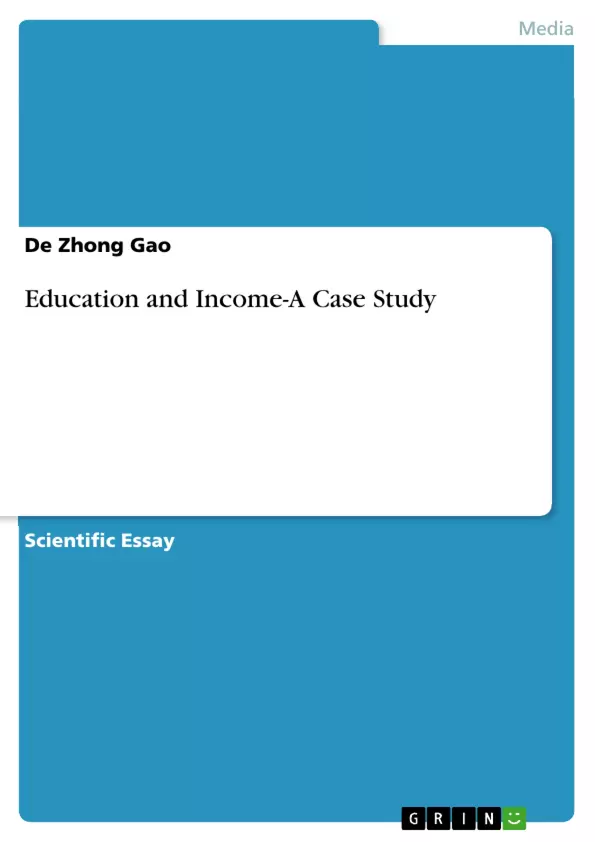There is a popular saying that all Yalies earn at least $110 after graduation. One can wonder whether a high level of education necessarily guarantees a high income in the future. In this paper, I will argue that the higher the level of education attained, the higher will be the earned income. In order to validate such causal relationship, I will bring three control variables in my testing hypothesis: the spurious variable of gender, the conditional variable of racial background, and socio-economic status—being in the middle or working class. As a spurious variable, gender affects people’s level of education attained and income. Being a woman or man predetermines people’s level of education and income in the future. Indeed, women have less access to education than their male counterparts, and thus they will earn a smaller income. A possible factor that can explain this is the dominance of paternalistic family in most Western societies that encourage men to pursue higher levels of education.
Inhaltsverzeichnis (Table of Contents)
- Summary Statistics
- Re-coding my Variables
Zielsetzung und Themenschwerpunkte (Objectives and Key Themes)
This paper aims to demonstrate a causal relationship between the level of education attained and the earned income. The author argues that a higher level of education leads to a higher income. To validate this hypothesis, the paper analyzes the impact of various control variables: gender, racial background, and socio-economic status.
- The relationship between education and income
- The influence of gender, race, and socioeconomic status on education and income
- Statistical methods used to analyze the data
- The use of cross-tabulations to understand the relationships between variables
- The presence of spurious and conditional variables in the analysis
Zusammenfassung der Kapitel (Chapter Summaries)
- Summary Statistics: This section introduces the study's methodology and data sources, explaining the use of an ex post facto experiment to analyze the relationship between education and income. It also discusses the variables used, including income, educational attainment, and their respective measurement levels.
- Re-coding my Variables: This section describes the process of recoding the variables for analysis. The author collapses the original categories of education and income into more manageable groups and focuses on specific racial categories for analysis. The section also presents Table 1.1, which displays the original relationship between education and income.
Schlüsselwörter (Keywords)
The key themes and concepts explored in this text include education, income, gender, race, socioeconomic status, spurious variables, conditional variables, cross-tabulations, and statistical analysis. The study examines the relationship between education and income, exploring the influence of various factors and using statistical methods to analyze the data.
- Quote paper
- De Zhong Gao (Author), 2011, Education and Income-A Case Study, Munich, GRIN Verlag, https://www.grin.com/document/188464



